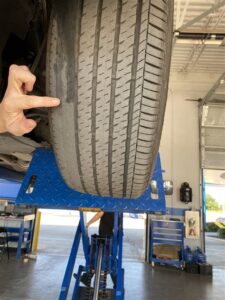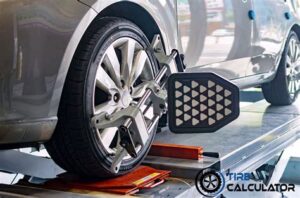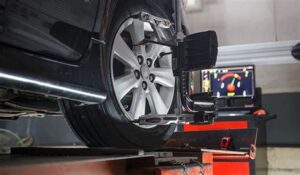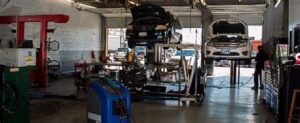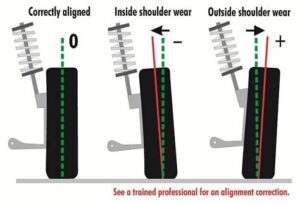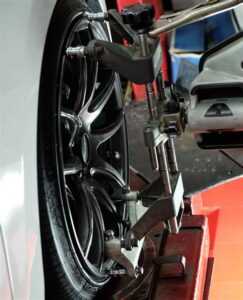Is your car shaking after a recent alignment? This unsettling issue can turn a smooth drive into a bumpy ride, leaving you anxious about your vehicle’s performance. Understanding the potential reasons behind this problem is crucial for ensuring your safety and comfort on the road. From common causes linked to tire integrity to how suspension problems may contribute to unwanted vibrations, it’s important to get to the root of the shaking. In this article, we’ll delve into the key factors that can cause your car to shake post-alignment, provide practical solutions, and guide you on the steps to take if you find yourself dealing with this frustrating experience. Read on to regain your confidence in your vehicle’s stability and performance.
Understanding Why Your Car Shakes After Alignment
When your vehicle experiences shaking after alignment, it can be unsettling and frustrating. This issue can occur for a variety of reasons, and understanding them is crucial for addressing the problem effectively. Typically, a vehicle shaking after alignment indicates that something didn’t go as planned during the realignment process or that other related components could be malfunctioning.
Here are some potential explanations for why your car shakes post-alignment:
| Potential Cause | Description |
|---|---|
| Tire Issues | Improper tire inflation, uneven wear, or damage can lead to vibration. |
| Wheel Balancing | If wheels aren’t balanced correctly, it may cause shaking at higher speeds. |
| Suspension Problems | Deteriorated shock absorbers, bushings, or struts can contribute to instability. |
| Component Damage | Any damage to steering or suspension components can lead to noticeable shaking. |
If your car shakes after alignment, it is essential to have it inspected by a qualified professional. Ignoring the issue can lead to more extensive damage and safety concerns. It’s crucial to address the underlying cause as soon as possible to ensure a smooth and safe driving experience.
Common Causes of Car Shaking After Alignment Issues
Experiencing vibrations in your vehicle after alignment can be concerning and may indicate underlying issues that need to be addressed. Below are some of the most common causes of car shaking following an alignment:
- Unbalanced Tires: If your tires are not properly balanced, they can create uneven weight distribution, causing vibrations at certain speeds.
- Worn Suspension Components: Parts such as shocks, struts, and bushings can wear out over time, leading to instability and potential shaking after an alignment.
- Improper Camber or Toe Settings: Incorrect angles on your wheels can lead to uneven tire wear and unwanted movement, contributing to shaking after alignment.
- Tire Damage: Inspect your tires for bulges, flat spots, or other damages that could lead to imbalance and shaking post-alignment.
- Wheel Misalignment: If the alignment was not done correctly or if components were accidentally knocked out of alignment during the process, it can cause shaking.
- Brake Issues: Warped brake rotors or other brake component problems can also manifest as vibrations, particularly when braking.
- Loose or Damaged Parts: Ensure that all bolts and components were tightened during the alignment process. Loose parts can lead to instability and shaking.
Identifying the cause of car shaking after alignment is crucial for ensuring the safety and performance of your vehicle. If you experience persistent issues, consider consulting a professional mechanic for a thorough inspection.
Checking Tire Integrity After Alignment for Smooth Rides
One of the crucial steps to ensure a comfortable driving experience after alignment is to check the integrity of your tires. Uneven tire wear can lead to vibrations and shaking, undermining the benefits gained from an alignment. Here are some key aspects to consider when inspecting your tires:
- Visual Inspection: Regularly inspect your tires for visible signs of damage, such as cracks, bulges, or punctures.
- Tread Depth: Measure the tread depth to ensure that it meets the recommended standards. A worn tread can lead to instability and vibrations.
- Tire Pressure: Maintain the correct tire pressure as specified by your vehicle manufacturer. Under-inflated or over-inflated tires can cause handling issues and contribute to shaking.
- Balancing: Ensure that your tires are properly balanced. Imbalances can lead to uneven wear and may cause your car to shake at certain speeds.
Taking these steps to check tire integrity after alignment can help ensure that your vehicle provides a smooth and safe ride. If you notice any inconsistencies, it may be advisable to consult a professional to resolve the issues before they escalate.
How Suspension Problems Contribute to Shaking After Alignment
After an alignment, if your car shakes, it could point to underlying suspension issues that might not have been addressed. The suspension system plays a critical role in maintaining vehicle stability and ride quality. Several components within the suspension can lead to vibrations if they are worn out or damaged.
Here are some common suspension issues that can cause shaking:
- Worn Bushings: Bushings are small rubber pieces that cushion the connection between suspension components. If they become worn or damaged, it can lead to increased play in the suspension and cause the vehicle to shake after alignment.
- Damaged Shocks or Struts: Shocks and struts help absorb road imperfections. If they are worn out, the car may bounce excessively, resulting in a shaky ride. This could be especially noticeable after adjustments to the alignment.
- Misaligned Control Arms: Control arms connect the chassis to the wheels. If they are misaligned or bent, it can create unwanted movements in the vehicle, which can manifest as shaking.
- Sway Bar Issues: A faulty sway bar can lead to excess movement during turns, contributing to vibrations and instability after having the vehicle aligned.
To ensure the best performance and comfort of your vehicle, it’s essential to have any suspension-related problems diagnosed and resolved promptly. Regular inspections can help identify these issues before they lead to more severe shaking problems after alignment.
Steps to Take If Your Car Shakes After Alignment
If you experience shaking in your car after alignment, it’s crucial to address the issue promptly to ensure safety and comfort while driving. Here are some steps you can take:
| Step | Description |
|---|---|
| 1. Safety First | Pull over to a safe location to prevent any further damage to your vehicle or an accident. |
| 2. Visual Inspection | Check for any visible issues, such as uneven tire wear, loose components, or other damages that may have occurred during the alignment. |
| 3. Recheck Alignment | Return to the shop where the alignment was performed. They can verify if the initial alignment was executed correctly and adjust if necessary. |
| 4. Tire Balance | Ensure that your tires are properly balanced. Imbalances can cause shaking regardless of alignment. |
| 5. Check for Suspension Issues | Inspect the suspension components for wear or damage, as issues here can also contribute to shaking after alignment. |
| 6. Professional Evaluation | If problems persist, consider having a professional mechanic conduct a thorough evaluation of your vehicle. |
By following these steps, you can identify and address the shaking sensation in your vehicle after alignment, ensuring a smoother and safer driving experience.
Frequently Asked Questions
What causes a car to shake after an alignment?
Car shaking after an alignment can be caused by improper adjustments, worn-out suspension components, or issues with tires such as imbalance or uneven wear.
How can I tell if my car needs a wheel alignment?
Signs that your car may need a wheel alignment include uneven tire wear, the vehicle pulling to one side, or the steering wheel being off-center while driving straight.
Is it normal for a car to shake after a wheel alignment?
No, it’s not normal for a car to shake after a wheel alignment. Persistent shaking should be inspected by a professional.
What should I do if my car shakes after getting aligned?
If your car shakes after an alignment, it’s best to return to the shop that performed the alignment for them to check for any errors or other underlying issues.
Can tire imbalance cause shaking after an alignment?
Yes, tire imbalance can lead to shaking, especially at certain speeds. It’s important to have both alignment and tire balance checked if shaking occurs.
How often should I get my car’s alignment checked?
It’s recommended to check your car’s alignment every 6,000 miles or at least once a year, and particularly after any major pothole impact or tire replacement.
Are there any preventative measures to avoid shaking after alignment?
To prevent shaking, regularly maintain your vehicle’s suspension and steering components, rotate your tires, and ensure they are properly inflated.
